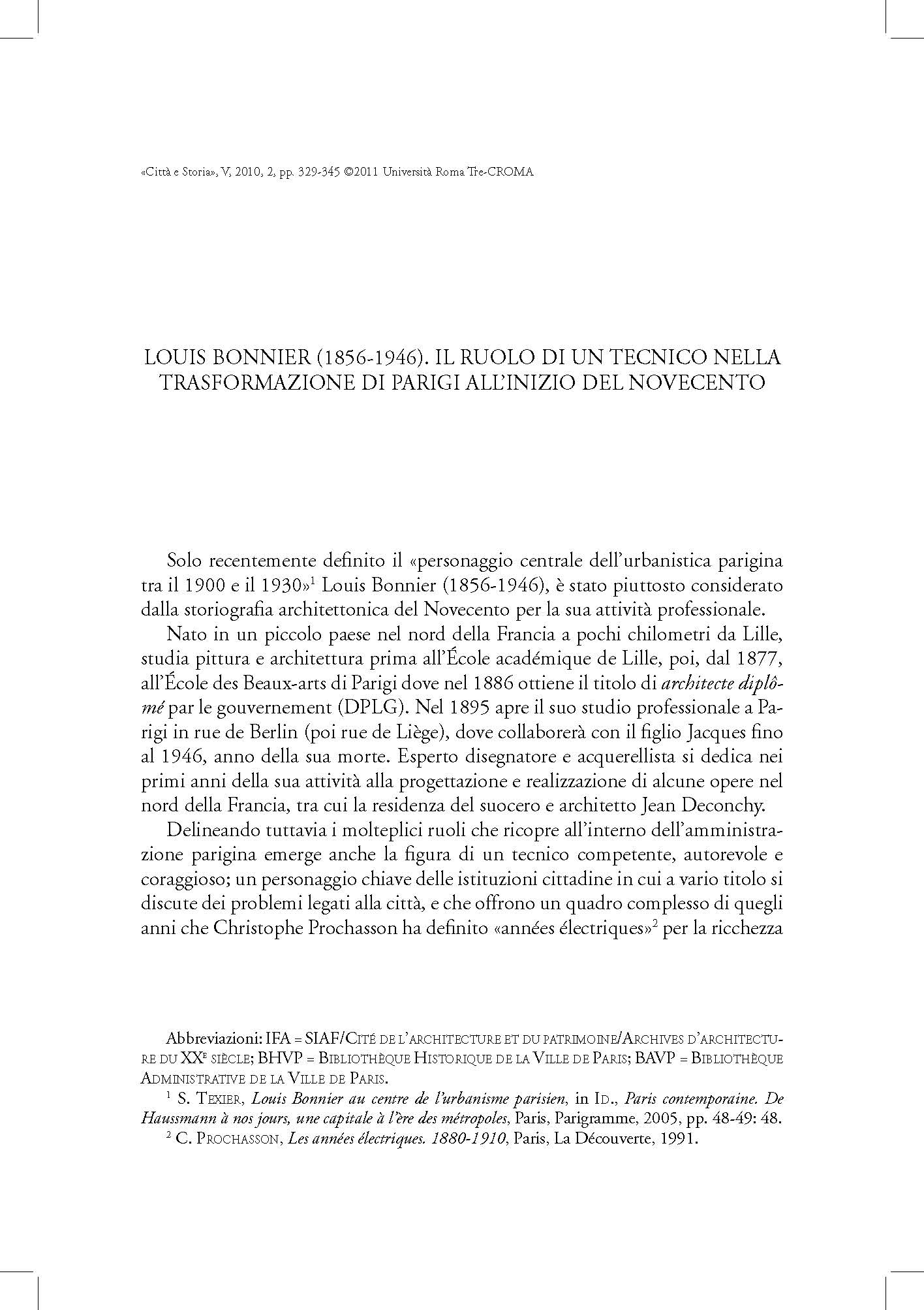Louis Bonnier (1856-1946). Il ruolo di un tecnico nella trasformazione di Parigi all’inizio del Novecento
6,00 €
In the architectural historiography Louis Bonnier (1856 – 1946) is better known for his career of architect, than for his activity related to the city of Paris, especially since the 20’s, for the Buttes aux Cailles pool’s construction, with its superb roofing made in concrete structure. During his life he spent most of his professional activities working as public servant for the city of Paris. From the analysis of his different public offices, emerges the uncommon figure of a qualified and influential technician, fully involved in many different contexts related to the Parisian Administration, from the long procedure of drafting and approval the 1902’s building code, up to the studies of the city expansion in 10’s and 20’s. In order to clarify his public role, the competitions, committees, debates where he’s involved, allow us to identify the contexts where the Administration dealt with questions concerning the modern transformation of contemporary city at the beginning of the Twentieth century, an extremely rich period for the architectural and urban Parisian culture.
In the architectural historiography Louis Bonnier (1856 – 1946) is better known for his career of architect, than for his activity related to the city of Paris, especially since the 20’s, for the Buttes aux Cailles pool’s construction, with its superb roofing made in concrete structure. During his life he spent most of his professional activities working as public servant for the city of Paris. From the analysis of his different public offices, emerges the uncommon figure of a qualified and influential technician, fully involved in many different contexts related to the Parisian Administration, from the long procedure of drafting and approval the 1902’s building code, up to the studies of the city expansion in 10’s and 20’s. In order to clarify his public role, the competitions, committees, debates where he’s involved, allow us to identify the contexts where the Administration dealt with questions concerning the modern transformation of contemporary city at the beginning of the Twentieth century, an extremely rich period for the architectural and urban Parisian culture.

